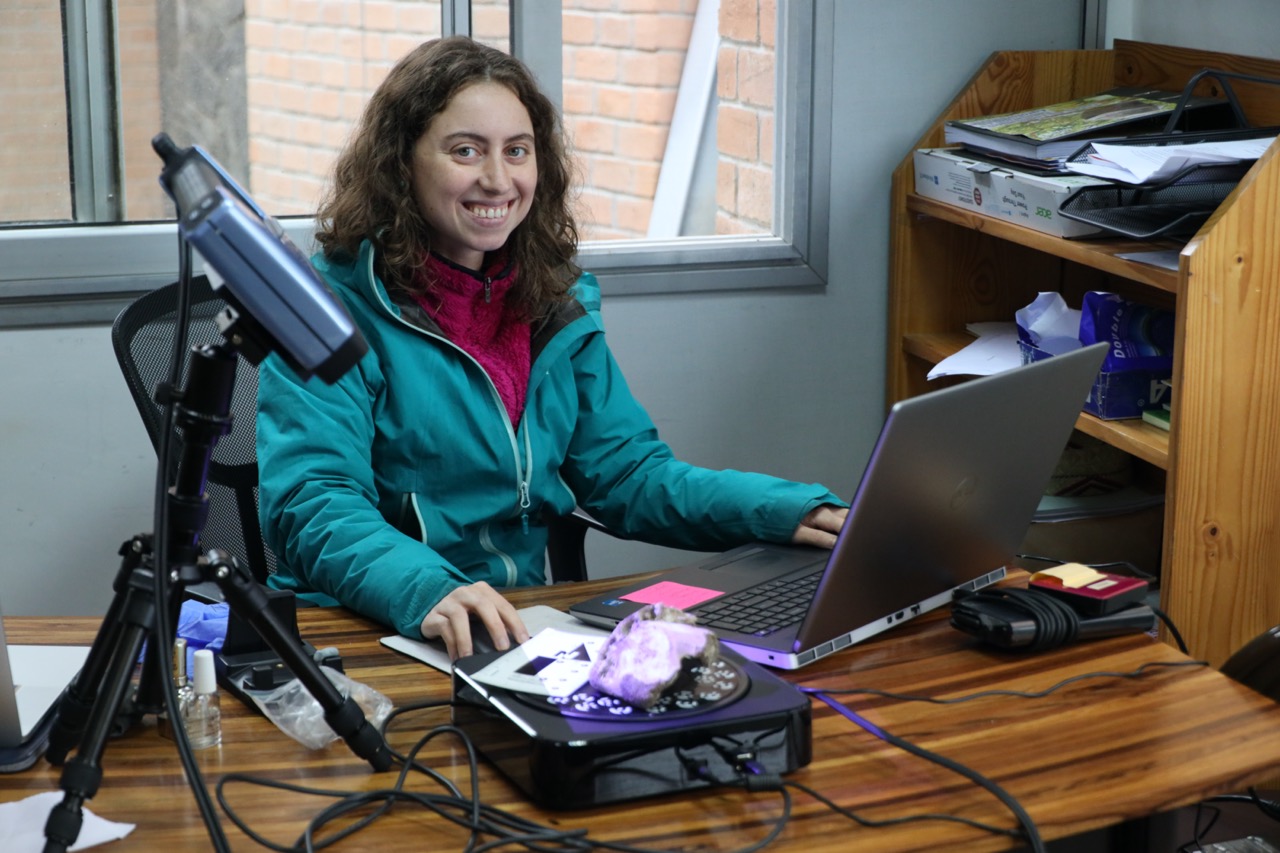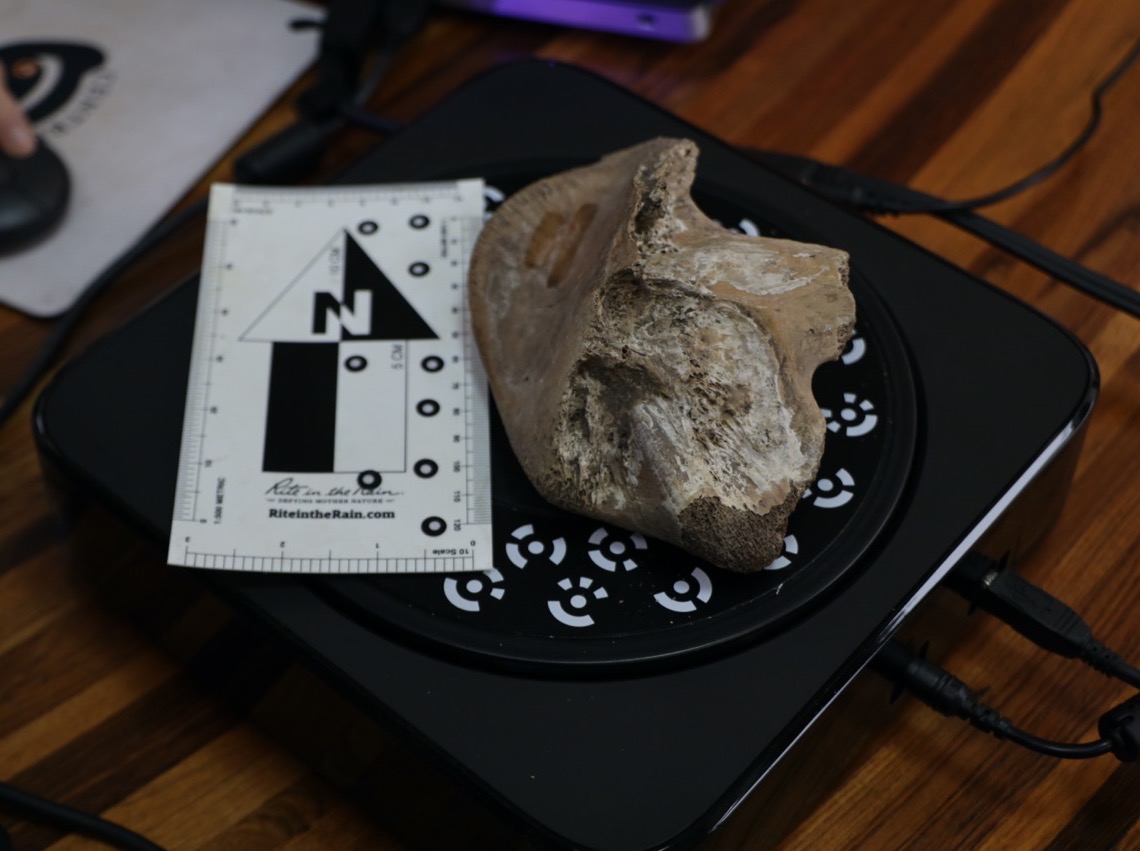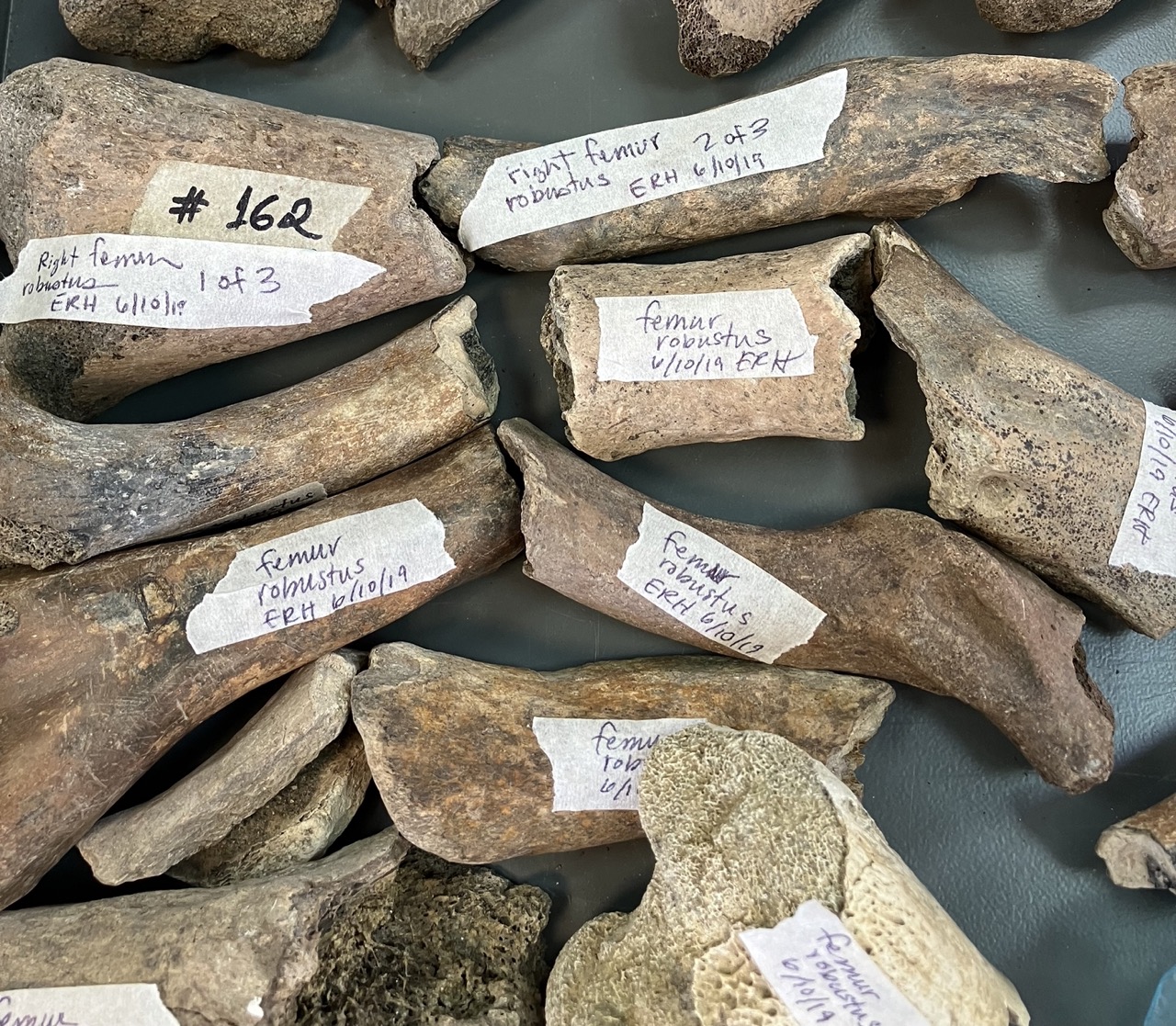Interview with Dr. Mai Fahmy: Digitizing CVB's crocodile fossil collection to support collaborative, community-centered research
By Johanna Mitra, ICTE/CVB Communications Officer, Interview Date: July 25th, 2023
In 2008, Dr. Patricia Wright and a team of researchers excavated numerous crocodile bones from Christmas River, once a swampy, marsh-like ecosystem in south-central Madagascar. The deposit in which the team found the bones date back more than 9,000 years and included the bones of giant lemurs, giant elephant birds, a giant tortoise, and Malagasy hippopotami as well, all of which are now extinct. The local community in the surrounding area had long spoken of two species of crocodiles present in the river, but only one—the Nile crocodile—was ever formally recognized and described by the Western scientific community as existing in Madagascar. With the help of Dr. Evon Hekkala at Fordham University, the bones of the second species, the horned crocodile (Voay robustus) were identified and described, including the largest horn of a horned crocodile ever found in Madagascar. The Christmas River subfossils have allowed us to significantly expand our understanding of Madagascar’s evolutionary history through paleogenomics and radiocarbon dating techniques.
Dr. Mai Fahmy is a postdoctoral researcher in Dr. Hekkala’s lab working with the Christmas River collection to build an online repository of diverse crocodile-related data. Read below to learn more about the goals of the database, the subfossil collection here at CVB, and Dr. Fahmy’s enduring connection to Madagascar.

Introduce yourself and tell us a bit about what you're doing here at CVB?
I’m Mai Fahmy, a postdoc at Fordham University and a research affiliate at the American Museum of Natural History. I’m here to scan [CVB’s] Christmas River subfossil collection, and I’m specifically looking at the crocodile subfossils. I’m scanning their surfaces to be deposited into a database that will hopefully house all different data types related to crocodiles. [The database] will be a one-stop shop for everyone that wants to do research on crocodiles…by [bringing] together all different points of view into one spot and [helping] inform different areas of research. We’ll be compiling cultural references of crocodiles, digitized fossil scans, DNA, archival footage, you name it! It will all be housed in this data repository where researchers can poke around and get a holistic view of the system.
Will the database be limited to Madagascar?
We’re starting in Madagascar, but the dream is to apply this approach across the Tree of Life. Much of science has been conducted in an extremely colonial context and this approach is one baby step in the direction of trying to correct that. With this database, we’re really hoping to center and attribute Traditional Knowledge. Crocodiles have been revered all over the world and at every [point in time], so they’re a really good group to start with for this project…We’re also going to be compiling these different data types for crocodiles in Egypt and the Americas.
Can you tell us a bit about the Christmas River subfossil collection?
 They’re called subfossils because they are pretty young in terms of [geologic time]
and they still contain bits of organic material. By definition, a fossil is a bone
that’s been entirely replaced by minerals…They were excavated in 2008 by Dr. Pat Wright
and her team from Christmas River, a site in south-central Madagascar. These crocodile
bones belong to Voay robustus, which is Madagascar's endemic and extinct horned crocodile. The story with Voay is that for ages, Malagasy people had always recognized two crocodile species in
Madagascar—one with simpler, smoother features, and one with bigger, more robust features.
European explorers immediately discounted this narrative and insisted it was one singular
species, the Nile Crocodile. But recently, Western science has recognized what Malagasy
people have known all along, that these are two separate and distinct species…
They’re called subfossils because they are pretty young in terms of [geologic time]
and they still contain bits of organic material. By definition, a fossil is a bone
that’s been entirely replaced by minerals…They were excavated in 2008 by Dr. Pat Wright
and her team from Christmas River, a site in south-central Madagascar. These crocodile
bones belong to Voay robustus, which is Madagascar's endemic and extinct horned crocodile. The story with Voay is that for ages, Malagasy people had always recognized two crocodile species in
Madagascar—one with simpler, smoother features, and one with bigger, more robust features.
European explorers immediately discounted this narrative and insisted it was one singular
species, the Nile Crocodile. But recently, Western science has recognized what Malagasy
people have known all along, that these are two separate and distinct species…
Who do you see using this database, and for what applications?
So, ideally this database is going to guide the fields of taxonomy and systematics, which historically have been very colonial and very Eurocentric…By compiling, aggregating, attributing, and centering Traditional Knowledge, we’re hoping to go back into some archival collections and incorporate that knowledge when it comes to distinguishing one species from another. This database would help anyone in taxonomy, potentially paleobiologists, [and] researchers working on contemporary crocodiles. I could also see, from a cultural perspective, some anthropological work being incorporated, especially when we bring in art and cultural iconography. So really [the database] is for everyone, and that is the whole intention—to move away from the culture of gatekeeping in science and try to invite as many people as are interested in working and collaborating on this collection.
What are some of the challenges involved in creating the database?
Crocodile bones are very textured and some of them can be very big. The technical
aspect of fitting them on this rotating stage, getting
every angle just right, and making sure that we’re getting a shot of every single
nook and cranny on these fossils has probably been the most challenging.
What's been the most enjoyable part?
I just love being back at CVB. It’s my fifth time around. I’m a former study abroad student from 2014 and I just keep coming back. Previously, I had worked on leeches and used them as samplers of biodiversity in Madagascar, so it’s cool to be back working on a new system but in a very familiar place with lots of familiar faces.
Can you describe what that journey has been like for you—starting as a study abroad student, coming back to do your PhD here, and now returning as a postdoctoral researcher?
This whole arc has really been a dream come true. I often can’t believe it's worked out for me this far! I remember being in Madagascar in 2014 and being entirely captivated by…everything I was learning [and] the people I was meeting. To this day I don’t think I’ve learned as much in six weeks as I did during that summer! I left feeling confident that this is what I would do for many years to come. I was a junior at the time, finishing up at Stony Brook, and I was wholly committed to applying for grad school and coming back to Madagascar and conducting my own research. The study abroad experience really equipped me to be able to do that. I really got a feel for how the research infrastructure works in Madagascar and I got to meet some really important people, so I would say study abroad just facilitated everything that happened thereafter. It’s really cool to be back here now as a postdoc after all these years.
And lastly, do you have any advice for aspiring scientists and students?
I would give them the advice that my undergraduate advisor [at Stony Brook] Dr. Sharon Pochron, gave me, and that would be to follow people and research that excite you. You don’t have to be the smartest person in the world, but you do have to be committed, so don’t be discouraged if you don’t think your grades are top notch or you had trouble in a class or two. None of that really matters much, as long as you’re willing to apply yourself entirely. It’s really about commitment and consistency, and you really have to enjoy it. It has to stay exciting throughout your whole journey.

Photos by Johanna Mitra, 2023
